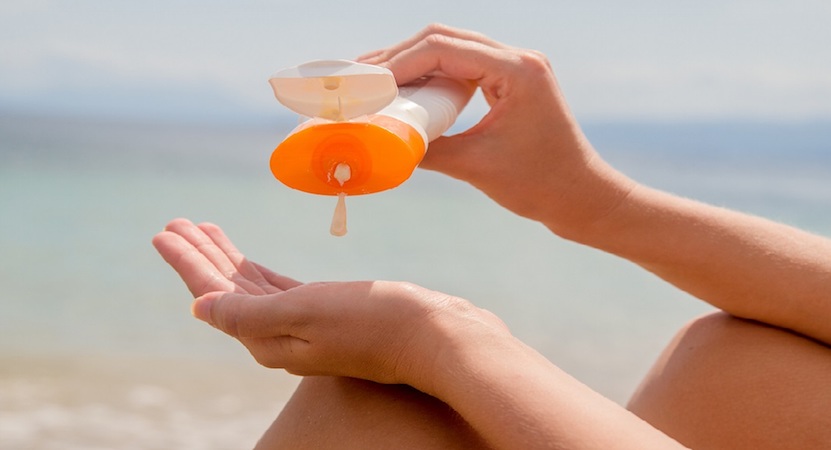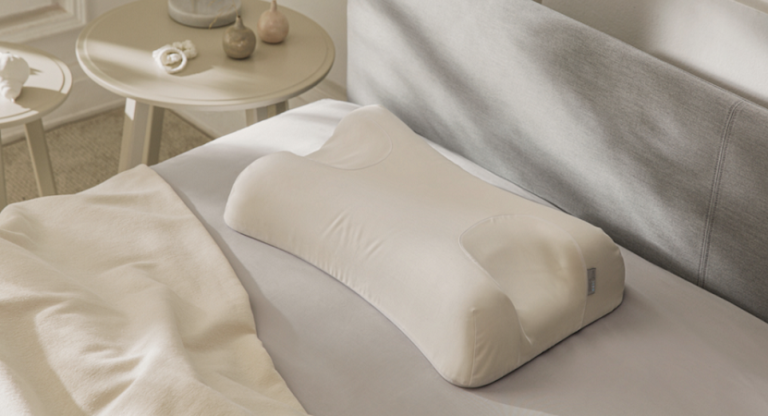Direct exposure to the sun’s UV rays is known to wreak havoc on the skin. With repercussions ranging from sunburns and premature aging to eye injuries and severe skin diseases such as skin cancer, it’s crucial to keep your skin protected from these harmful rays.
Sunscreen is recommended by dermatologists and medical professionals to prevent the harmful effects of sun exposure, everywhere. While sunscreen is important, not many people use it as much as they ought to. It might also get confusing when it comes to choosing between chemical vs. physical (or mineral) sunscreen.
In this article, we’ll take a look at the basics of sunscreen and compare the two types, physical and chemical sunscreen.
We will cover the following:
- What is the Difference Between Physical and Chemical Sunscreen?
- How Does Sunscreen Work?
- What are the Pros and Cons of Physical and Chemical Sunscreen?
- Common Ingredients in Chemical and Physical Sunscreen
- Why is Mineral Sunscreen Better than Chemical Sunscreen?
- What is the Best Sunscreen?
- Sunscreen for Sensitive or Acne-Prone Skin
- Reasons Why You Should Apply Sunscreen Daily
- Ultimately, What is the Right Sunscreen for You?
What is the Difference Between Physical and Chemical Sunscreen?
The two types of sunscreens used are chemical and physical sunscreen. These two come in different forms, such as lotions, creams, pastes, sprays, butter, and gels. The main difference between them is in how they work to protect you from the sun’s UV rays.
Physical sunscreen creates a physical barrier on the skin that reflects the harmful rays from the sun. By deflecting the rays, it acts as a sunblock. As such, this type of sunscreen is also referred to as sunblock.
Chemical sunscreen, on the other hand, is absorbed into the skin on application. It works by absorbing the sun’s harsh rays as they come into contact with the skin’s surface. On absorption, the chemical sunscreen converts the rays into heat, which are then released from the skin as infrared rays.
How Does Sunscreen Work?
SPF, UVB, UVA, and broad-spectrum are some of the terms you’ll come across where sunscreen is concerned.
There are mainly two types of UV light that damage the skin—UVA and UVB. When you use a broad-spectrum sunscreen, it offers protection from both.
Sunscreen that’s not labeled as broad-spectrum may only offer protection against UVB rays. This means that as a user, you’ll be exposed to the effects of exposure to UVA.
UVA rays lead to premature aging of the skin, causing age spots and wrinkling. On the other hand, UVB rays burn the skin. Excessive exposure to both rays can contribute to skin diseases such as cancer.
The best sunscreen is the one that protects you from UV light.
SPF
SPF means Sun Protection Factor and refers to how much sunscreen can protect the skin from harmful UVB rays. UVB are rays that damage the skin, cause sunburns, and can even lead to skin cancer.
This is how sunscreen and the different SPFs work:
If, after 10 minutes, your skin starts to burn while in the sun, then an SPF 15 sunscreen would offer you protection from the sun for about 150 minutes. That’s 15 times longer. This estimation depends on the amount of sunscreen you apply, your skin type, and the sun’s intensity.
Experts recommend applying about an ounce of sunscreen for the whole body and reapplying every 2 hours. But many people underapply sunscreen. They use only ½ or ¼ of the required amount. Using half the amount of an SPF 30 sunscreen only gives you the protection of an SPF of 5.5!

The FDA recommends the use of sunscreen that has at least an SPF 15. However, people with fair skin are advised to use a sunscreen with an SPF of 30 and above as their skin complexion is more likely to get damaged by the sun.
In regards to physical vs. chemical sunscreen, the former is considered to be naturally broad spectrum. The latter needs the formulation of different chemicals to form the ability to absorb UVA rays.
What are the Pros and Cons of Physical and Chemical Sunscreens?
Each type of sunscreen comes with different levels of efficacy and safety concerns. Let’s look at the benefits of using physical or chemical sunscreen and their side effects.
Physical Sunscreen
Physical sunscreen is also referred to as mineral or natural sunscreen. That is because it’s made using mineral-based ingredients. The two main active ingredients found in mineral sunscreen are zinc oxide and titanium dioxide. Sunblock is considered a natural type of sunscreen because it’s not composed of chemicals, unlike chemical sunscreens.
That said, the pros of using physical sunscreen are:
- Physical sunscreen is naturally broad spectrum. It protects your skin from both UVB and UVA rays without requiring additional chemicals. That ensures your skin is protected from premature aging, sunburn, and skin cancer.
- It’s suitable for sensitive skin as it doesn’t contain chemicals that may irritate sensitive skin.
- Natural sunblock becomes effective on application. As soon as it’s on the skin, it forms a protective barrier, and you can walk right into the sun immediately.
- When applied, it lasts longer under direct ultraviolet light than chemical sunscreen.
- Because it doesn’t have chemicals in its formulation, it’s safe to use on babies and pregnant mothers.
The cons of using natural sunscreens include:
- For natural sunscreen to offer adequate protection, you need to apply a considerable amount.
- It’s thicker compared to chemical sunscreens. As such, it requires more effort to rub in.
- Mineral sunblock rubs off easily. It also comes off with sweat or water. This means that if you sweat a lot or go swimming, you will need to keep reapplying it every two hours.
- Some formulas may not be compatible for people with medium or dark skin tones as it can leave a whitish cast when applied.
- Due to its thickness, it’s not always suitable to apply under makeup as it can feel heavy and increase the rate of perspiration.
Chemical Sunscreen
The main active ingredients in chemical sunscreens are oxybenzone, octinoxate, avobenzone, octisalate, and octocrylene. Chemical sunscreens can be found in a combination of two or more of these ingredients.
The pros of using chemical sunscreens are:
- Chemical sunscreen is much lighter than natural sunblock. That makes it a lot easier to spread over the skin. You can also apply it under makeup as it’s lightweight.
- Ingredients that have a variety of benefits to the skin, such as vitamin C or E, can be easily added into the formulations used to make chemical sunscreen. For people who would like to get more skin benefits from their sunscreen, chemical sunscreens are the best.
- Considerably less chemical sunscreen is required to achieve the same effect as physical sunscreens. Unlike mineral sunblock, chemical sunscreens leave no gaps, which may allow UV rays to penetrate the skin.
The cons of using chemical sunscreen include:
- Because of the different types of ingredients used, chemical sunscreens have a higher likelihood of causing skin irritation.
- Chemical sunscreen may lead to an increase in brown spots and cause discoloration to the skin. That is because of the increased internal temperature of the skin when UV radiation is converted to heat.
- If you sweat, the sunscreen may cause stinging in the eyes if it drips into them.
- When you step out into direct UV, the protection chemical sunscreens offer is used up more quickly. As a result, you will need to reapply it more frequently.
- It may lead to clogged pores for people with oily skin. That is because the sunscreen gets absorbed into the skin. Clogged pores affect essential skin functions, such as detoxification. Therefore it may also cause acne.
- People with rosacea-prone skin may experience redness. That is as a result of the heat produced in the skin when UV rays are absorbed.
- On application, a chemical sunscreen takes some time to get absorbed into the skin and to start working. The FDA advises you wait for at least 15 minutes before stepping into the sun.
- Some of the chemicals used, such as oxybenzone, may penetrate the blood system and affect the function of hormones. It especially affects estrogen, which makes it unsafe for pregnant and breastfeeding mothers.
By comparing the benefits and side effects, you can decide which between chemical vs. mineral sunscreen works best for you.
Common Ingredients in Chemical and Physical Sunscreen
A variety of both active and inactive ingredients are used to make sunscreen products. Some of the inactive ingredients include water and oil. The common active ingredients are aminobenzoic acid, homosalate, octinoxate, oxybenzone, avobenzone, titanium dioxide, octisalate, and zinc oxide. Among these ingredients, there are those that are considered safe to use, while others have various side effects.
Safe Sunscreen Ingredients
Safe sunscreen ingredients include:
- Titanium Dioxide – It is one of the main physical sunscreen ingredients, and it’s a broad-spectrum filter. Titanium dioxide is FDA-approved and even considered safe for use on babies who are six months or older.
- Zinc Oxide – It’s recognized as safe and effective by the FDA, and doesn’t pose any risk to the skin. Zinc Oxide is also a safe ingredient for sensitive skin.
- Avobenzone – This ingredient is harmless to the skin and environment. It’s used in broad-spectrum chemical sunscreens, where it’s usually combined with other ingredients to stabilize its filtering abilities.
Sunscreen Ingredients to Avoid
Sunscreen ingredients that you need to avoid are:
- Oxybenzone – It has been identified as being harmful to marine ecology. Oxybenzone is even banned in Hawaii because it’s not reef-safe. On the human body, it mimics estrogen, thereby disrupting the normal functioning of the hormone.
- Retinyl Palmate – it’s a form of vitamin A and one of the ingredients beneficial to the skin that’s added to chemical sunscreens. Normally, it’s an antioxidant that slows skin aging. However, on exposure to the sun, it forms free radicals, which can damage the DNA.
- Para-Aminobenzoic Acid (PABA) – This ingredient increases photosensitivity and allergic dermatitis. It has also been found to be toxic, and as a result, it’s been banned in some countries such as Canada.
Why is Mineral Sunscreen Better than Chemical Sunscreen?
While both chemical and mineral sunscreen offer protection from the sun’s ultraviolet rays, mineral sunblock is rated higher because:
- Mineral or natural sunblock offers broad-spectrum UV protection and only contains mineral-based active ingredients. Chemical sunscreens have chemical-based active ingredients which may have undesirable effects on the skin. Also, broad-spectrum mineral sunblocks protect you from both UVA and UVB rays.
- Compared to products with chemical ingredients, natural sunscreen is much less likely to irritate the skin because it doesn’t get absorbed into the skin.
- Physical sunblock is more convenient to use because it starts working as soon as it’s applied to the skin.
- Mineral sunscreen doesn’t clog the skin pores.
You can find the best chemical-free sunscreen for your skin in your local store, or you can get recommendations from your dermatologist. That said, to achieve the best results when using your sunscreen of choice, you need to use it daily.
What is the Best Sunscreen?
Whether you choose chemical or physical SPF, you should look for the following on the label:
- SPF of at least 30 or more
- Oil-free
- Broad-spectrum
- Fragrance-free
- Paraben-free
- Noncomedogenic (doesn’t clog pores)
Sunscreen for Sensitive or Acne-Prone Skin
If you have sensitive or acne-prone skin, buying the right product will prevent a breakout and even improve how your skin looks. Therefore, you should go for a sunscreen labeled for blemish-prone or sensitive skin.
Sunscreens containing niacinamide, which is a form of vitamin B3, reduces discoloration and the appearance of blemishes.

If you’re not sure which sunscreen you should choose, get several different samples, physical and chemical, from your pharmacy or dermatologist. Then, dab a little on your wrist for a couple of days continuously. If there’s no reaction, then it might be okay to apply on your face.
Reasons Why You Should Apply Sunscreen Daily
It’s easy to think that you don’t need sunscreen when you’re indoors or it’s cloudy outside. On the contrary, you should wear sunscreen at all times throughout the year because:
- About 80% of the UV rays penetrate through the cloud cover.
- UVA sun rays can penetrate through glass, which means even while indoors, your skin is still exposed to UV radiation.
- Sunscreen has anti-aging effects on the skin. That is because sun exposure destroys the collagen fibers in the skin, thus weakening it. Wrinkles, fine lines, and dry skin appear as a result. By blocking or absorbing the UV rays, sunscreen protects the skin from premature aging.
- It prevents skin discoloration and the formation of brown spots on the skin.
Ultimately, Which is the Right Sunscreen for You?
When choosing between mineral vs. chemical sunscreen, you should always consider your skin type, lifestyle, unique needs, and the pros and cons of each. For sensitive, acne, or rosacea-prone skin, you’re better off using mineral sunscreen for your face and the rest of the body. If your skin isn’t sensitive and you prefer something lighter, then chemical sunscreen is your best bet. Chemical sunscreen is also a better option if you:
- Are swimming and want a water-resistant sunscreen
- Sweat a lot during day-time or play a sport
Also, note that some sunscreens are a combination of both mineral and chemical ingredients. As long as a product does not cause any irritation to your skin, you’re good to go. If you’re concerned about the environmental or health effects of different ingredients, always confirm which sunscreen chemicals have been used. When choosing a sunscreen, also keep in mind the SPF value to ensure that you get adequate protection.
Now, get out there with confidence and enjoy the sun!
Did You Enjoy This Article?
If you enjoyed this article, you might also like our articles discussing skincare and makeup such as 21 Best Facial Toner, 13 Best Eyelash Growth Serum, and Top 23 Organic, Vegan and Natural Lip Balm.



